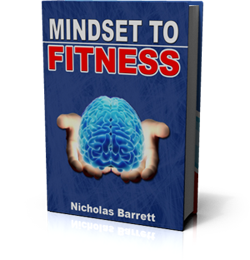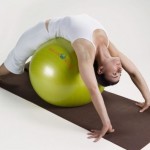
Most people wanting to get into better shape, whether it be to lose weight, gain muscle, or get conditioned for a specific sport, at some point join a gym.
When joining a popular gym you are then offered an initiation to the ‘equipment’ or machines. This involves meeting one of their personal trainers, who will then wheel you around a circuit of mostly 10-12 machines, on a count from 1 to 10 basis. This circuit is usually repeated 2 to 3 times with all the movements done in the comfort of a nice chair… Sound familiar? Well that’s great business for their Personal Trainers, as it is easy and can be done from the knowledge gained from a one day course, as all they need to do is basically adjust the machine and know how to count from 1-10… Simple!
The drawback is that for any person wishing to improve the functionality and fitness level of their body, settling for this type of training will bring little “bang for the time invested”, not to mention money. The only benefit maybe psychological in that you feel you are doing something. If you didn’t go to the gym for a year and then went back, you would probably notice the same people doing the same machines on a count from 1-10 basis, with 2-3 circuits. You would also notice very little if any change in the trainees appearance or fitness level, as in order to have what you have not had before, you must do what you have not done before. Doing the same mundane easy routine, will bring the same mundane results.
Are you one of those people??… If yes the next part of this article can bring you ground breaking results.
The idea of taking time and effort to exercise, whether as a professional athlete or a lay person is to get your body to function and perform better, be it on the sports field or in the routine of everyday life. Machine training is great for getting ‘show’ muscles like bigger biceps for a summer tank top, or poolside on a vacation, but for the functionality of lifting luggage, moving furniture, carrying a TV from Fry’s to the car, or balancing off a high chair to reach up to a shelf, these isolated now bigger muscles are useless. What use is there to bigger muscles without being able to use them more efficiently, other than to lift a heavier number on the bicep machine.
Machines quite simply due to their isolation of individual muscle groups, are not effective in creating the duality of translating what you can lift in the comfort of sitting in a chair of a machine, verses what is demanded of your body in the ‘real’ world. I’m sure it will start to make sense to you by now, that sitting and just moving your arms, or legs slowly up or down will do nothing to improve your everyday mobility or performance.
In the routine of everyday life we are called upon to move at varying speeds and angles, fast or slow adapting to what the circumstances demand, making adjustments of speed essential. In core,functional training it is imperative to develop awareness of every moving part of your body involved in a particular movement. It is also important that your body is constantly adapting to the correct position, keeping it aligned to the range of motion required for a movement.
The benefit to you of using core/ functional movements is that they use more of your body’s 206 muscles to perform each movement, giving you maximum results in a shorter time. A training program that uses non- functional exercises, such as seated exercises on machines ,with single muscles in isolation will not trigger the core muscles to stabilize, hence will use less muscles and burn fewer calories.
For example:
| Non- Functional movement; | Functional movement; |
| Bench press | Push- up |
| Cable pushdown. | Chin or Pull Up |
| Leg press | Squat |
| Tricep pushdown | Tricep dip |
What is Functional Training?
The answer put simply, is get stronger performing an activity that you need to get stronger in performing. Functional training has become a buzzword over the last several years in training studios, and other more cutting edge facilities around the world. In fact it has become a household term.
What is function?
The body only knows movements as it relates to function.
Functional is integrated training, using multiple directions (Multi- planar) movements that involve stabilization, acceleration and deceleration.
The best way for me to put it in comprehensive terms, is to describe it as being integrated training to achieve more effective movement patterns. It stimulates the body to work as a synergistic moving piece, resulting in a body that can perform at a higher level in sports, as it functions with balance, and not the rigidity associated with most PERSONAL TRAINING. Functional
TRAINING puts the the focus on increasing strength, flexibility,endurance, speed and agility.
Core/ functional training will not only improve an athlete’s performance, but the average person to develop strength and balance that will aid everyday activities, such as carrying a child, standing on a ladder to reach up and get an object off a high shelf. A core/functional training program will also aid in the correct activation of the musculoskeletal system, by stimulating the more efficient functioning of the nervous system.
Key Benefits for Functional Training
- Everyday activities
- Functional TRAINING improves the quality of everyday life, by improving the body’s ability to function in a synergistic, integrated way, by improving agility and balance at the same time as strength.
- Stronger back (less pain);
- Weak core muscles are one of the key contributors to our modern day bad back epidemic. Functional training will dramatically improve these weak areas.
- Burn more calories; Be more efficient.
- Machines Training +s.
- Rehabilitating an injury where an individual cannot support his/her bodyweight, or isolating an individual muscle group that has atrophied during injury.
If you are in the Los Angeles area and you would like a complimentary one-on-one assessment with Personal Trainer in L.A. Nicholas Barrett, please don't hesitate to get in touch! Personal trainer Los Angeles. Los Angeles personal trainer. Personal trainer marina del rey.







